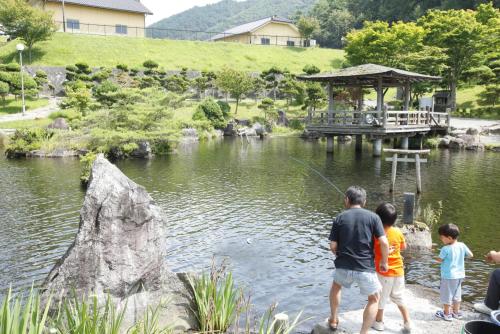3.11 Great East Japan Earthquake Tonoshichi Rear Support Materials Museum
menuMenu
This museum, rare even on a national scale, showcases the record of Tonoshichi City's rear support activities for coastal disaster-stricken areas following the Great East Japan Earthquake.

Highlights
- Learn the lessons of the earthquake
- A nationally rare museum specializing in rear support activities
- Learn the specifics of Tonoshichi City's activities
- Valuable photographs and materials are on display
- Increase disaster preparedness awareness
Basic Information
- Address
- 10-46 Nukamae, Aosasa-cho, Tonoshichi, Iwate Prefecture Search for tourist attractions in Iwate
- Access
- Located within the parking lot of the Tonoshi Comprehensive Disaster Prevention Center (10-46 Nukamae, Aosasa-cho, Tonoshichi, Iwate Prefecture) Access: https://www.city.tono.iwate.jp/index.cfm/50,0,307,581,html Show route
- Op.Hours
- 9:00 AM to 5:00 PM (Open all year round)
- Cld.Days
- May be closed in case of emergencies such as natural disasters.
- Fee
- Free admission
- INFO
- No prior reservation is required. Feel free to visit during opening hours.
Overview
Recommended nearby attractions
Great East Japan Earthquake Tsunami Memorial Museum Iwate TSUNAMI Memorial

A precious facility that conveys the lessons of the Great East Japan Earthquake. Raise your disaster preparedness awareness through exhibits and videos that allow you to experience the terrifying power of the tsunami.
Shimojyuku Permanent Resident Promotion Housing (Earthquake Relic)

A precious relic conveying the terrifying power of the Great East Japan Earthquake tsunami.
Disaster Relic Topic 45

A valuable site where you can witness the devastating power of the Great East Japan Earthquake tsunami.
Kesennuma City Great East Japan Earthquake Remains and Legacy Hall (Former Kesennuma Koyo High School)

This facility preserves the school building of the former Kesennuma Koyo High School, which was damaged by the tsunami of the Great East Japan Earthquake. Witness the impact of the tsunami and feel the importance of disaster preparedness.
Disaster-stricken Structure: Former Rikuchūtakata Municipal Kesennuma Junior High School

The former Kesennuma Junior High School, completely destroyed by the tsunami of the Great East Japan Earthquake, serves as a poignant reminder of the importance of disaster preparedness, as all students survived.
Rias-Ark Museum

A museum where you can deeply experience the memory of the Great East Japan Earthquake and the history of tsunami disasters through photographs and disaster-related objects.
Utsuumi Stadium

Utsuumi Stadium, a symbol of recovery from the Great East Japan Earthquake, hosts many professional baseball games. Experience the thrill of professional baseball in this stadium, built with the passionate hopes of the local residents!
Takata Matsubara Tsunami Reconstruction Memorial Park

A symbol of reconstruction that conveys the lessons of the Great East Japan Earthquake. A park where you can feel both commemoration and hope for the future.
Rikuzentakata Youth Hostel (Earthquake Disaster Remains)

A valuable site where you can witness firsthand the devastating impact of the Great East Japan Earthquake tsunami.
Coastal Mountain Fumon-ji Temple

Packed with highlights including an Iwate Prefecture-designated cultural property—the three-story pagoda—and numerous Buddhist statues donated after the Great East Japan Earthquake!
Nearby Hotels
Hotel Kikuyu

Aeria Tohno

Takamuro Suikoen

